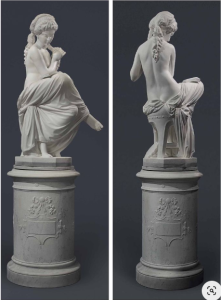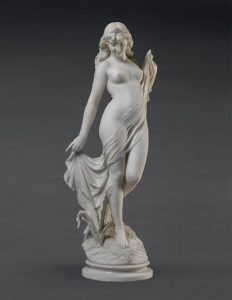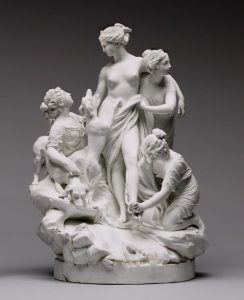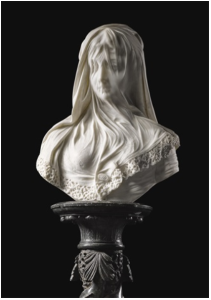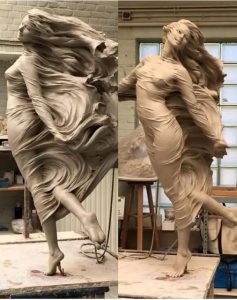Antonio Canova’s sculpture, “The Three Graces,” crafted in 1817, is a resplendent depiction of classical beauty and harmony. The piece represents Aglaea (Splendor), Euphrosyne (Mirth), and Thalia (Good Cheer), the three daughters of Zeus, who personify the virtues that inspire generosity and shared joy. This masterpiece, housed in various prestigious collections in its different versions, stands as a testament to Canova’s mastery in capturing the ethereal and the divine in marble.
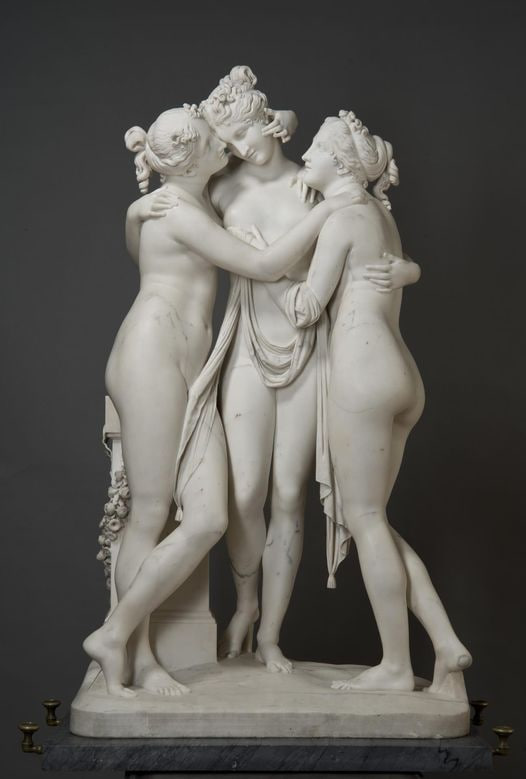
Historical and Artistic Context
Antonio Canova, renowned as the preeminent sculptor of the Neoclassical era, was celebrated for his refined sculptures that reflected the idealized forms of antiquity. Created in 1817, during a period marked by a revival of classical ideologies, “The Three Graces” was commissioned by Empress Joséphine, the wife of Napoleon Bonaparte, and later completed for the Duke of Bedford at Woburn Abbey, illustrating the high demand and esteem for Canova’s works among the European elite.
Description of the Sculpture
“The Three Graces” depicts the titular figures intertwined in an embrace, symbolizing their unity and the virtues they bestow upon humanity. The sculpture is exquisitely detailed, with each figure rendered in a distinct pose that together forms a circular composition, viewable from all angles. This circularity ensures that no single viewpoint is sufficient to appreciate the full beauty of the work, inviting onlookers to engage with the sculpture fully.
The figures are sculpted with smooth, flowing lines that highlight their delicate forms and the softness of their flesh. The gracefulness of their bodies and the intimate arrangement convey a sense of serenity and balance, embodying Canova’s ability to translate mythological themes into tactile expressions of human emotion and ideals.
Symbolism and Interpretation
The Three Graces have been a popular subject in art, representing joy, beauty, and creativity, and are often associated with the giving of gifts of beauty and joy. Canova’s interpretation is particularly noted for its depiction of physical and emotional intimacy between the figures, highlighting the inseparability and collective nature of their attributes.
In Canova’s hands, the mythological narrative transcends its ancient origins to express universal themes of love, friendship, and artistic inspiration. His work not only captures the physical beauty of the Graces but also evokes the spiritual and moral beauty they represent.
Canova’s Artistic Legacy
“The Three Graces” stands as a pinnacle of Neoclassical sculpture, showcasing Canova’s skill in using marble to convey softness and warmth, qualities often reserved for the brush or the chisel. The work is celebrated for its technical excellence and its emotional depth, reflecting Canova’s ethos of reviving classical antiquity through a contemporary lens.
Antonio Canova’s “The Three Graces” remains a significant artistic achievement, embodying the ideals of Neoclassical sculpture through its celebration of classical beauty, emotional expression, and philosophical depth. This masterpiece continues to enchant and inspire, serving as a lasting symbol of the beauty and harmony that art can bring into the world.
